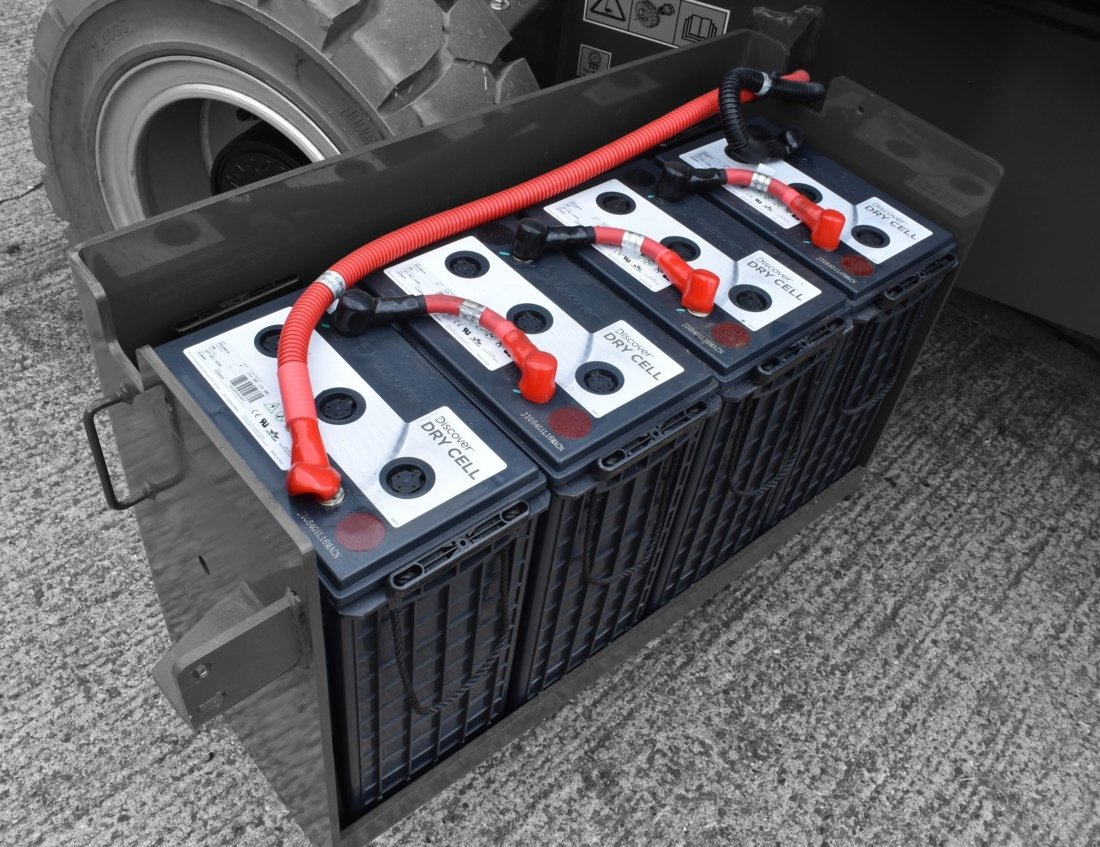
Anti-Concussion Technology: The Helmet on Your Head
In December, the U.S. Department of Labor’s Occupational Safety and Health Administration announced it was replacing traditional hardhats for its employees with ANSI-Z89.1-certified Type II safety helmets when they work on sites. But some contractors had been requiring the more protective helmets for at least some of their workers since 2015.

Navigating economic downturns: challenges and strategies for the cranes industry
The cranes industry, integral to construction, infrastructure, and logistics, is not immune to the effects of economic downturns. These periods of economic decline can significantly impact the demand for construction projects, influence investment decisions, and alter market dynamics. This article explores the challenges posed by economic downturns on the cranes industry and provides strategies to mitigate their impacts. By understanding these factors and implementing adaptive measures, industry players can better navigate economic uncertainties and emerge resilient.

Discover Battery's TCO calculator
Canadian battery manufacturer Discover Battery has launched a Total Cost of Ownership (TCO) calculator allowing users to fully understand and determine the operational costs of a battery over its lifetime.
The calculator allows users to input data such as battery specifications, costs, labour expenses and service frequency to calculate total operational costs. The company says it can help users save up to 40% when selecting a battery.

A tree whisperer: Chesterfield 16-year-old becomes youngest certified arborist in state
Being home-schooled for much of her secondary school career gives Priya McSweeney some measure of choice over how she spends her time.
Still, that alone doesn’t fully account for the 16-year-old’s expertise in the field of arboriculture, which she showed last month by passing the Massachusetts Certified Arborist examination, becoming the youngest certified arborist in the state.

The key to safe sling selection
Wire rope multi-part slings
I have always been told that every job is easy if you have the right tools. The same philosophy is true for lifting slings and rigging. Choosing the proper sling before making a lift will ensure the task is performed correctly and most importantly, safely. Understanding the basics of selecting a sling for your lifting operations is vital for your efficiency and productivity. The rated capacity of a sling varies depending upon the sling material, the size of the sling, and the type of hitch. Wire rope, alloy steel chain, synthetic web, synthetic round and natural and synthetic fiber slings all have unique properties that need to be evaluated before the material selection can be made. Each type of sling has its advantages and disadvantages.

Where is telematics technology headed?
Before the year 2000, the term “telemetry” was only associated with NASA and the space program. Today telematics is a mainstream term in the construction equipment industry; telematics technology is constantly evolving through new benefits and new technologies that are being added to those benefits.

Make Eliminating Jobsite Distractions Company Safety Goal
Heavy equipment operation requires a clear mind and sharp vision. Distractions from electronic devices, fatigue or ground activity can put the operator, the employer and the project at risk. Marking Distracted Driving Month in April, OSHA urged contractors to have a play to prevent operator distraction while driving machinery on the job.

TAILGATE TALKS WITH YOUR CREW IMPROVES JOBSITE SAFETY
On a job site, it’s tempting to immediately start a task or resolve an issue with a “get ‘er done” attitude. However, in doing so, you lose the opportunity to identify safety risks.
When working as a team, you also need to discuss the risks of that job site. By discussing safety risks, you decrease the chances of someone getting injured.
Building contractor talking to male worker. Mid adult engineer is sitting in pick-up truck. They are in reflective clothing at construction site.The utilities sector is a higher-risk sector. Some of the most frequent worksite causes of injury and death are present in the utilities industry. These include slips and falls, collision with a moving object, and contact with dangerous substances.

5 Tests to Determine if Your Tree is Dying or Dead
Trees are remarkable living organisms, capable of withstanding various environmental stressors, diseases, and pests. But there comes a time when even the sturdiest tree may fall under these challenges. It can be difficult and confusing to distinguish between trees that are dead and those that are dormant, especially during the off seasons when deciduous trees naturally shed their leaves. Trees under severe stress may also shed their foliage and appear dead when they are actually still alive and capable of recovering.

Manitowoc launches two new Potain luffing jib cranes
The MR 309 and MR 329 provide fast and easy assembly, a greater height under pivot and more powerful load charts says Manitowoc.

How Custom Truck One Source Is Driving the Green Movement in Commercial Vehicles
Commercial vehicles play a key role in the global economy, transporting goods around the world and assisting in the development of infrastructure. The Environmental Protection Agency (EPA) announced a proposal in 2023 to revise the current standards that aim to reduce greenhouse gas emissions associated with commercial vehicles and set new, more stringent standards. Meeting these ambitious targets requires major change. As a result, businesses of all sizes in this industry need to rethink how they operate.
Opinion: Did 'South Park' Nail the Reality of the Skilled-Worker Shortage?
While I don’t keep up with “South Park” regularly, I’ve caught my fair share of episodes over the years and have come to appreciate the show’s satirical and outlandish takes on current events.
A clip from the October 2023 special “South Park: Joining the Pandaverse” recently made its way into my Instagram feed and provided some entertaining and maybe not-too-farfetched social commentary on the future of the skilled trades.
Liebherr L series cranes updated
The revision of the L series sees the crane size specified in metre tonnes, with immediate effect. To reflect this Liebherr has changed the cranes’ nomenclature and so they are now known as the 25 L and 33 L.

New 80ft LGMG boom
Chinese manufacturer LGMG has launched a new 80ft articulated boom lift with diesel or all electric power packs - the AR24J diesel and lithium battery powered AR24JE. In North America they become the AR80J and AR80JE.

ESSENTIALS FOR NEW ENGINEERS: LESSONS FROM THE UTILITY EXPO
“Most engineering students spend their time studying engineering standards and math,” says Doug Houseman, Principal Consultant at Burns & McDonnell. “They need that knowledge, but they also need knowledge of equipment. They may get an hour of class time for that, which leaves a giant gap in their knowledge base. They don’t know a bucket wheel from a backhoe. The Utility Expo is where they can get that gap filled.”

SPREADER BEAMS AND LIFTING BEAMS: TAKE THE WEIGHT OFF
While spreader beams and lifting beams are the most popular below-the-hook lifting devices, there is still confusion concerning the differences between the two, in terms of how they’re designed and what they’re used for. Jenny Eagle reports.

Nifty harness attachment sensor
Niftylift has started trials of a new harness attachment sensor for its boom lifts which it expects to launch later this spring.
The device - to be known as the ‘ClipOn’ - will initially be trialled by UK rental company Speedy.

WHY THE NEXT GENERATION OF THE WORKFORCE SHOULD CONSIDER WORKING IN THE UTILITIES INDUSTRY
The next generation of workers (Gen Z, born between 1997 and 2013) is poised to overtake Baby Boomers in the full-time workforce in early 2024, according to Glassdoor’s 2024 Workplace Trends report. With unprecedented spending taking place to support a clean energy transition, utilities need to sharpen their focus on attracting and retaining this next generation of workers.

SAFETY INNOVATIONS IN UTILITIES: FROM WEARABLE TECHNOLOGY TO ENVIRONMENTAL PROTECTION
Working in utilities poses numerous risks. Electric shock, working with toxic substances, falling from a height, trench collapse, and confined spaces are some of the regular dangers utility workers face.
Companies must proactively approach safety, regularly train staff on safety hazards and procedures, and equip them with adequate safety equipment.

How is the lifting and transport industry working towards a sustainable future?
International heavy lift and transport specialist Mammoet is innovating with zero-emission lifting and transport on site to help its customers reduce the carbon footprint of their projects.
Mathias Hoogstra, head of sustainability at Mammoet
Mathias Hoogstra, head of sustainability at Mammoet. Photo: Mammoet
Who better to have the first word on this than Mammoet head of sustainability Mathias Hoogstra, “If you ask me what my main vision is, I want us to redefine the construction site – at least at small scale initially – where we have electric or hydrogen cars, electric cranes, electric trucks, and have all this equipment cross-link and charge each other.

